

|
|
||||||||||||||||||||||||||||||
|
||||||||||||||||||||||||||||||
|
|
|
|
||
 |
The importance of an antenna Without using a high gain, rotatable external antenna, any given "DX-capable" tuner, with adaptive or conventional narrow filters may not perform optimally. The antenna (pictured) is the most critical part of my DX system. One exception may be when you are lucky enough to live in an elevated location.  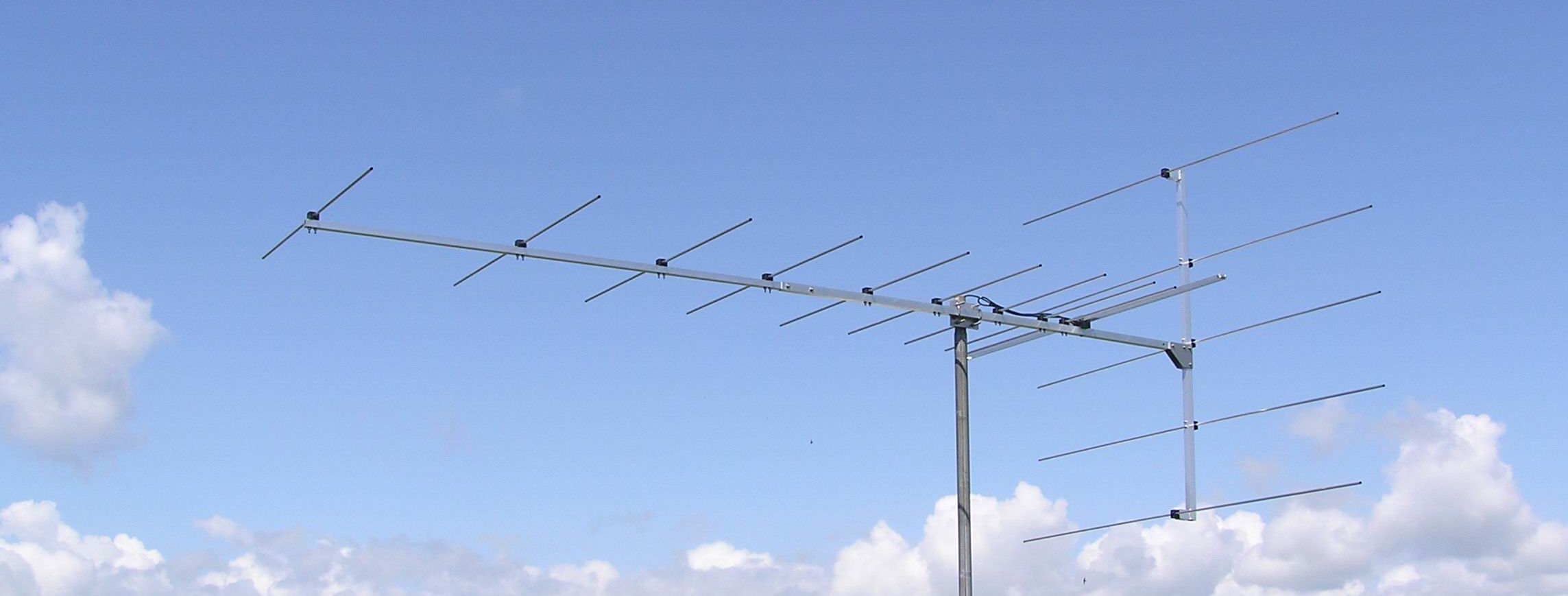 In December 2003, Electronics For You published a comprehensive article about FM antennas in their magazine. The PDF article explains how enthusiasts can improve their FM reception in the home. The author specifies which antenna is good for long distance FM reception (FM DX). The author also discusses the characteristics of car FM antennas. For those starting out in FM DX, with about $200 to spend... one recommended option is to engage a professional installer to erect an eight element antenna on your property. To maximize the performance of this investment, mount the antenna in isolation, on its own mast, above roof level and ensure it can be manually rotated from the ground. Several antennas covering similar frequencies may 'interact'. For the best performance, locate one FM or wideband antenna as far as possible away from another. Put the FM antenna atop a mast with a height of roughly 1.7 metres above roof level. Motorized rotation is an option available at an additional expense of $200-$300.  While installing the highest gain dedicated FM antenna is desirable, it is a luxury in the city and may not be suitable for everyone. Brian Beezley tests a wide range of antennas on his site including smaller unobtrusive models. Antenna Specialties of Adelaide offers a selection of inexpensive FM DX antennas and motorized rotators to suit. Of all the commercially manufactured, yagi style antennas available in Australia, those models offering three FM elements (pictured) are probably the most unobtrusive. Can't install another antenna? Good results may be achieved simply by using a temporary installation in the backyard. Alternatively, a single, high quality, wideband antenna can be used for both TV and FM. I share my experiences in detail here. Listed are a number of websites which can be used to help you determine the elevation of your property. Easy-to-understand photos contributed by others or myself are also included on that page. Many have suffered fatal injuries falling from rooftops, in an effort to save a few dollars. Please, delegate the responsibility to antenna installation professionals. 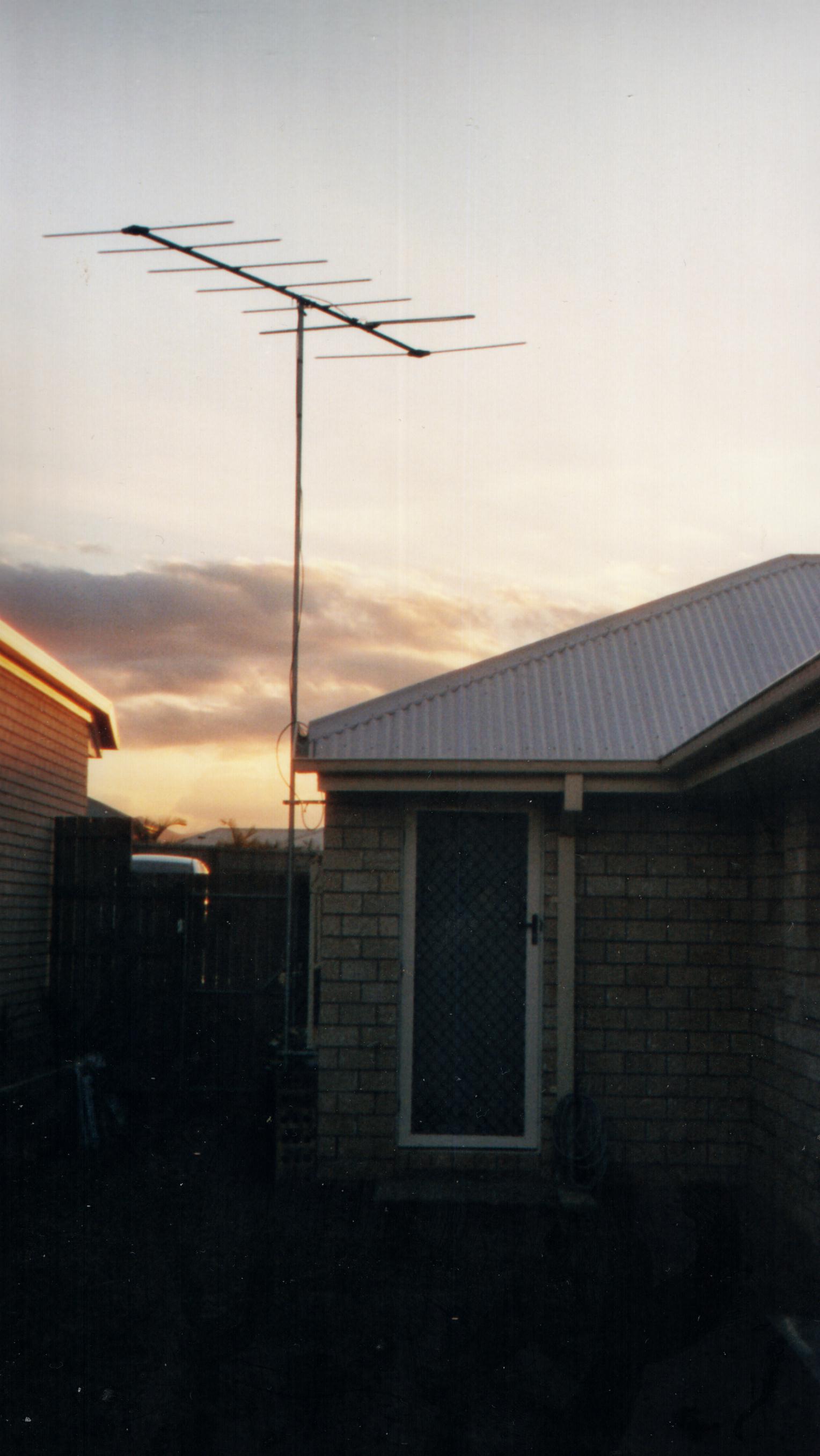 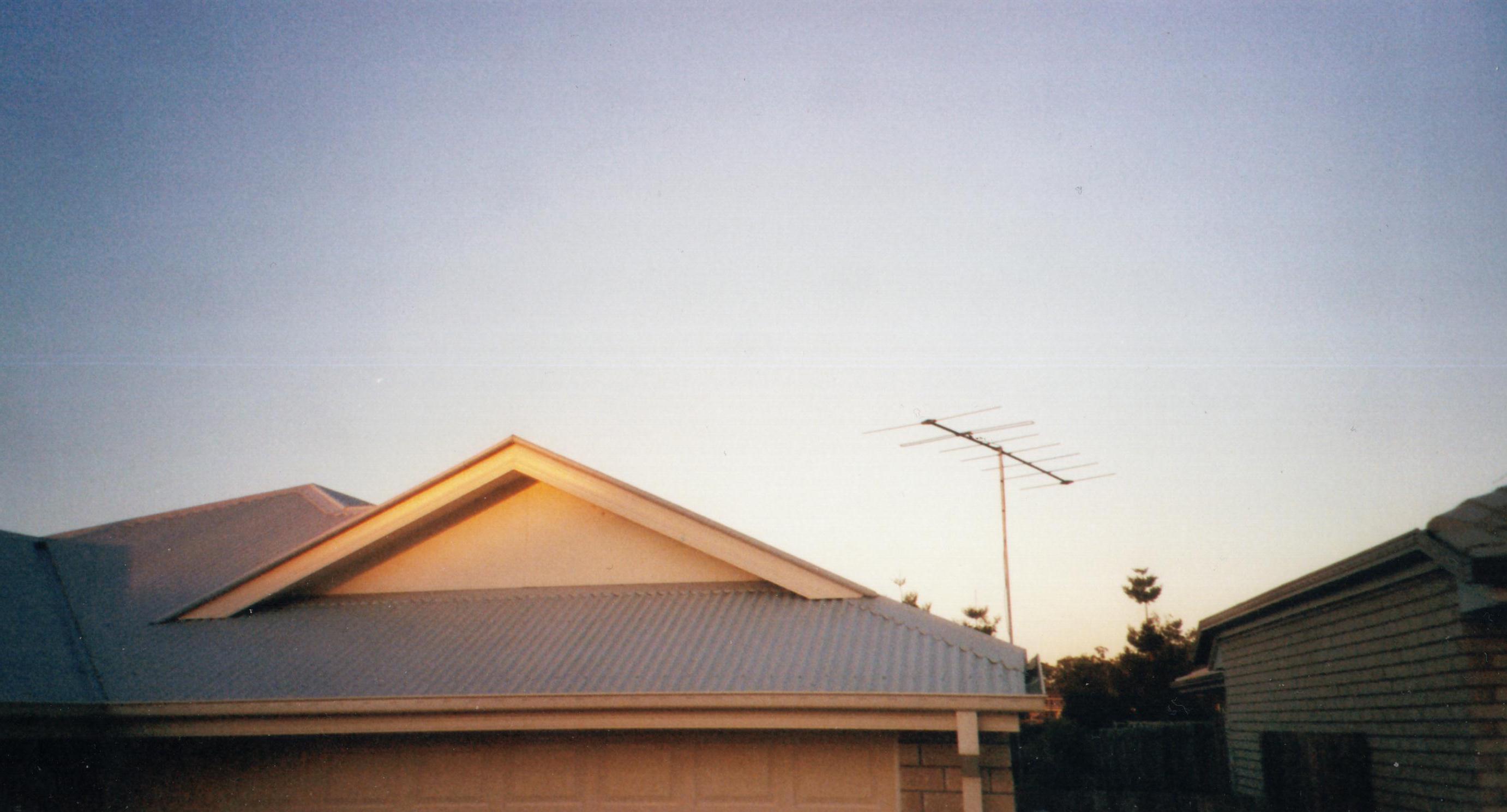 On this page, we will examine a typical installation. At my residence, two antennas are mounted on the roof of the single storey house, at opposite ends of the house. The recommended option, an eight element FM antenna (pictured) is positioned above the garage and a non-rotatable VHF/UHF TV antenna on the pitch of the roof. Please visit this detailed page which contains the specifications of all the recent model antennas used. It contains data about the models used permanently at home and temporarily during field trips or on vacation. Connections, amps & hardware used The external antennas are cabled to separate F-type wall plates. No splitters, combiners or wideband preamplifiers are used the majority of the time. An inline F-type splitter is used on those rare occasions when it is essential to use two tuners at the same time on the same antenna. Amplification is successfully used for long distance TV reception only. It is unsuccessful for FM reception. Why doesn't it work? I simply live too close to the major FM broadcast site. Using a preamplifier causes images or "ghost signals" of excessively strong local FM stations all over the dial, swamping the receiver. This is an oversimplification. Unfortunately, the experience with preamps may vary markedly from location to location. You may find that by rotating the antenna to a particular azimuth (antenna position), tuner overloading is not a problem. Should that be the case, then it is likely a preamplifier may be successful for improving weak FM reception. You may need to reduce the gain of a preamp to reduce overload by using an F-type attenuator at the output, for example. Please be aware that this will cause the specified noise figure of the preamp to worsen, as Brian Beezley explains here. I don't consider reducing the supplied voltage to a preamp the ideal way to reduce the gain, but that's another option I suppose! Unfortunately, the use of preamps to potentially aid FM reception is complicated. This subject is beyond the scope of a website designed to be non-technical and elementary level. Detailed information is available here. The author of this historical paper looks at the pros and cons. Both papers are written from an amateur radio perspective. 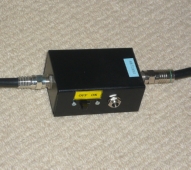 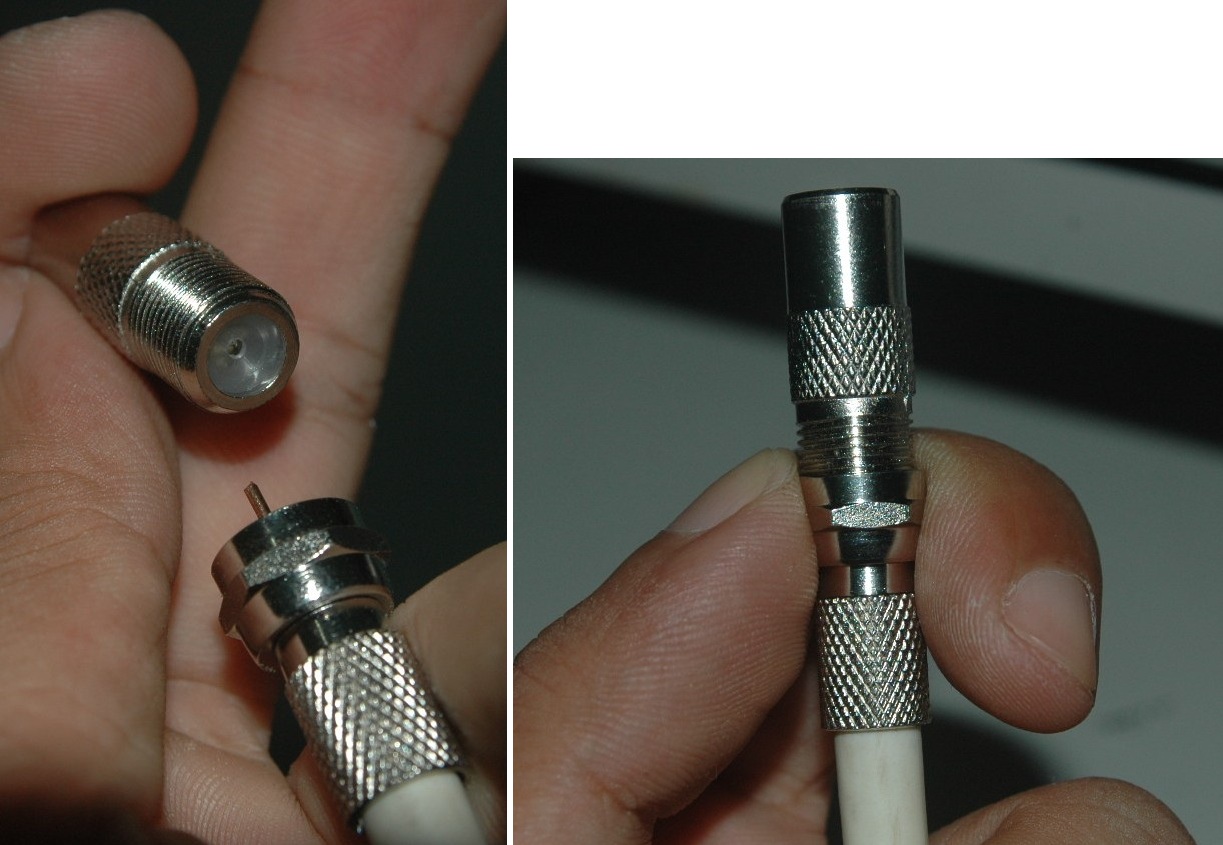 RG6 Quad Shield Coaxial Cable is used to connect all antennas to the wall plates. It would appear that some sources of RG6 Quad Shield Coaxial Cable are not as durable as others, so you might like to try different brands of cable until you find one you prefer. A better quality cable, RG11, is designed for underground, professional cable TV applications. RG11 is available at specialist retailers by the metre. However, considering specialist tools are required to crimp the connectors and with the additional expense over RG6Q, its use seems overkill. RG6 Quad Shield Coaxial Cable is perfectly fine for the lowly black art of long distance FM reception! F-type connectors are used to standardize connections between the receiving equipment and the wall plate. For dwellings that come with PAL-type wall plates, this requires the use of an F-type to PAL adapter. F-type splitters, attenuators and adapters cost only a few dollars. Where a major broadcast site is in close proximity, a 3 decibel F-type attenuator is used in-line. It is used in circumstances where I am using a non-rotatable antenna that is fixed in the direction of the site. Judicious use (for example, 6 decibels maximum) of attenuation may improve sensitivity on certain tuners which overload from excessively strong local TV audio and FM signals. Weak signal reception noticeably improves, under those circumstances, on adaptive IF receivers, including the Sony XDR-S10HDiP docking radio and JVC UX-SG5B micro system, particularly the latter.  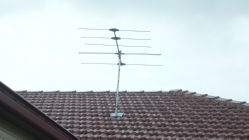 Inside the home, car receivers can be connected to an external directional antenna by simply inserting the stripped end of a RG6 Quad Shield Coaxial Cable firmly into the Motorola antenna socket on the receiver and the other end of the cable into the wall socket. Belden ultra low loss RG59 is unsuitable for use as car receiver "fly leads" as it is too thin to snugly fit into the Motorola antenna socket. Siting your antenna to offset interference Ethernet Over Powerline home networks, Wired Home Alarm systems, Plasma televisions and Air Conditioning units can generate Electromagnetic Interference (EMI) that may be picked up by your external FM antenna. These devices have prevented the reception of permanent fringe FM signals entirely at certain times. Tests indicate ADSL Routers may trigger EMI if the telephone line connecting the device is excessively long, as the line may act as an antenna. According to LD Blake, certain Wireless Routers may cause round-the-clock interference on frequencies up to 160 MHz. Ethernet Over Powerline adapters can radiate interference for hundreds of metres round-the-clock according to Dave Sergeant. Ethernet Over Powerline adapters are in a league of their own! Several correspondents on the Australian Whirlpool forum have reported significant interference to analogue television reception whilst operating these networks. Nigel Coleman tested one model which is readily available in Australia. The most significant interference was found in the spectrum that covers FM and DAB reception. Reception was entirely destroyed. The device pollutes frequencies between 0.1 MHz and 370 MHz.  
Ed Hare tested some other common household devices (pictured). He found that the most problematic devices included old televisions, old Cathode Ray Tube (CRT) monitors, old computers which are not housed in metal cases, hairdryers, vacuum cleaners and drills.  Whilst listeners have considerable control over what interference their own household produces, the neighbours' household produces interference that cannot be eliminated. Before erecting an antenna, try the antenna out in the backyard, close to where the proposed antenna erection site is. Lie the antenna fully extended, as elevated as possible, to maximize the turning radius. Point the antenna North and tune through all the clear frequencies. Clear frequencies are the frequencies where an FM broadcast is not normally heard. If possible, use a tuner featuring a detailed signal meter and listen with headphones. Ensure pure white noise (or weak troposcatter signals) are heard on all clear frequencies. Repeat this procedure with the antenna pointed Northeast, East and Southeast. This entire band "survey" should take 15 minutes or less. After this field test is complete, you may identify one neighbour that is spewing interference across the FM band, into virtually all of the empty frequencies whilst the antenna is pointed in the direction of that property. In all likelihood, the interference will also affect reception in the lower bands, including analogue VHF TV channels 0-2. Reception of AM radio broadcasts may be significantly impaired. Ensure you locate the antenna as far away from the offending property as possible. Remember, your neighbour is probably oblivious that this is occurring, and has a legitimate right to operate their household devices in peace. The onus is on you - the listener - to locate the antenna in a proper "quiet" location. The centre of your property probably provides the most protection, but in the real world, this is often not possible. 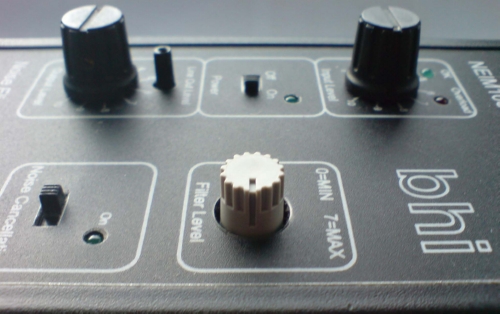 Trying to hear a weak FM broadcast through stubborn interference is a frustrating experience. There is rarely a remedy to interference once it occurs. DSP Noise Reduction devices, such as those manufactured by BHI (pictured) may assist in situations where interference poses a moderate problem. Prevention is always best! Find out your interference sources before you engage a professional to erect the antenna. Once the antenna is up, moving it because it is too close to a source of neighbourhood interference is both costly and inconvenient. Sadly, I speak from experience.  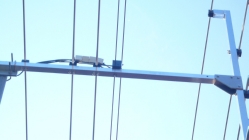 Find out why your
FM reception is being ruined by modern electronics here.
Detailed
information concerning sources of interference is available here
from an amateur radio perspective. Jim Brown has authored an excellent paper
which
provides solutions for interference into VHF and FM bands. Jim is a
qualified Electrical Engineer, Audio Engineer and amateur licensee.
Solutions include ferrite suppressors and in-line filters (both
pictured).
Using a tuner that
permits fine-tuning in 0.01 MHz (10 kHz) steps such as the Yamaha
TX-9xx and T-8x series is very useful in situations where
interference is problematic. Tuning off by 10-20 kHz on
the Yamaha TX-930 will allow reception of stations otherwise masked by
overwhelming noise when tuned in on the proper centre frequency. For
example, tuning off to 92.28 MHz to receive interference-free ABC Local
Radio Coffs Harbor FM 92.30.
The ultimate FM antenna If you have the space, please consider importing a high performance FM antenna designed by Peter Körner (marketed by VHF Teknik of Sweden). Prices including air freight are very reasonable compared to lesser performing domestic offerings. 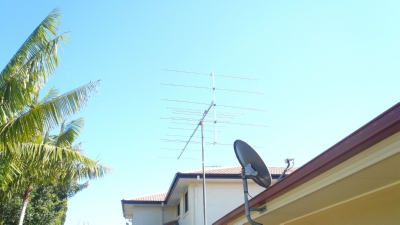 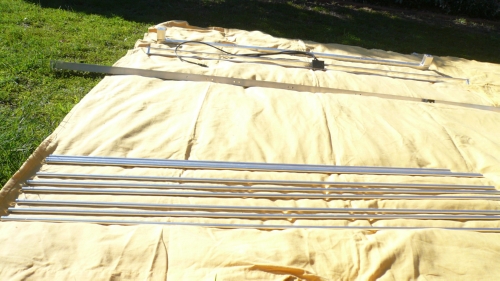 Peter's 15 element antenna is only 3.73 metres in length and 2.08 metres in height. A typical eight element antenna is about 2.3 metres in length. The photographs above show the antenna installation in July 2010. Full assembly is required. Engage a professional to perform the assembly or if you are really keen, set aside a full weekend and assemble it yourself! |
|
|
|
||
| Site Map |